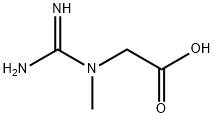Pharmaceutical
Human APIs Powder
- Respiratory Drugs Raw Material
- Antiviral Antibacterial
- Antipyretic Analgesics
- Antihistamine Drugs
- Antineoplastic
- Cosmetic Raw Material
OEM & ODM
- Capsule
- Softgel Capsule
- Gummies
- Drop & drinks
- Tablets
- Effervescent Tablet
- Gel
- Powder
- Chewing Gum
- Pet Supplement
Veterinary raw materials
Phone: 86-13279202917
E-mail: sales@nutrition-oem.com
Add: Fengcheng 2nd Road, Weiyang District, Xi'an, Shaanxi, China
Creatine Powder supplier:amazon creatine,benefits,uses


Product Overview:
Creatine Raw Material Factory Supply Creatine Nutritional Supplement Creatine Powder Raw Material, High Quality Creatine Powder Purity 99% Creatine Powder Osthole Nutritional Supplements. Creatine is a natural antioxidant that can have a protective effect on cells in the body and is an important active substance in the organism.
Product Attributes
CAS: 57-00-1
MF: C4H9N3O2

MW: 131.13
EINECS: 200-306-6
OEM:Customized logo is welcome, Packing as your requirement. offering private label
Specification: 99% min Creatine powder
Packaging: 1kg/bag. 25kg/bag
Brand: Ausreson
MOQ:1KG
Appearance: White Powder
Storage: Cool Dry Place
Shelf Life: 2 Years
Test Method: HPLC
Product Details
Creatine Raw Material Powder Usage and Synthesis
Creatine Raw Material Factory Supply Creatine Nutritional Supplement Creatine Powder Raw Material, High Quality Creatine Powder Purity 99% Creatine Powder Osthole Nutritional Supplements. Creatine is a natural antioxidant that can have a protective effect on cells in the body and is an important active substance in the organism.
Manufactory Supply Creatine Powder Raw Material, High Purity Creatine Powder Nutritional Supplement Creatine Raw Powder, High Quality Creatine Powder.
Uses and functions of Creatine Powder
Creatine, also known as alpha-methylguanidinoacetic acid, is a naturally occurring nutrient found in the human body that can also be synthesised from arginine, glycine, and methionine in the liver, kidney, and pancreas:
Catalysed by renal arginine-glycine transamidinase, the amidinium group of arginine is transferred to the amino group of glycine to produce guanidinoacetic acid.
Then in the liver, catalysed by guanidinoacetic acid methyltransferase, the methyl group of S-adenosylmethionine is transferred to guanidinoacetic acid to produce creatine.
Bioactive pharmacological effects of Creatine Raw Powder
Prismatic crystal (with one molecule of water of crystallisation). Melting point 303°C, relative density 1.33. Soluble in boiling water and 98% acetic acid, slightly soluble in ethanol, insoluble in ether and butyric acid.
Act with inorganic acid to get creatinine, and soda lime coheating to get methylamine, and potassium hydroxide azeotropy to get ammonia, and potassium permanganate to get methylguanidine oxalic acid and guanidine; in aqueous solution at room temperature with mercury acetate to get methylguanidine glyoxylate, and finally to produce methylguanidine and oxalic acid, and the last one is methylguanidine and oxalic acid.
Finally, guanidine and oxalic acid are produced. It is converted to creatinine in the autodigestive action of muscle juice or organ extracts.
Production method of Creatine Powder
Creatine has basic functions such as increasing the water content of muscle cells, helping them store energy and increasing protein synthesis;
Among other things, synthetic creatine can be used as a nutritional supplement to promote the adaptation of bone and armour muscles to strenuous exercise and to counteract excessive fatigue in weakened individuals; it can also be used to prepare drugs for the treatment of heart disease and respiratory insufficiency; and to prepare pharmaceutical preparations containing human growth hormone;
It can also be used to formulate a new health food with anti-aging and stamina-restoring effects.
Inquire This Product
















